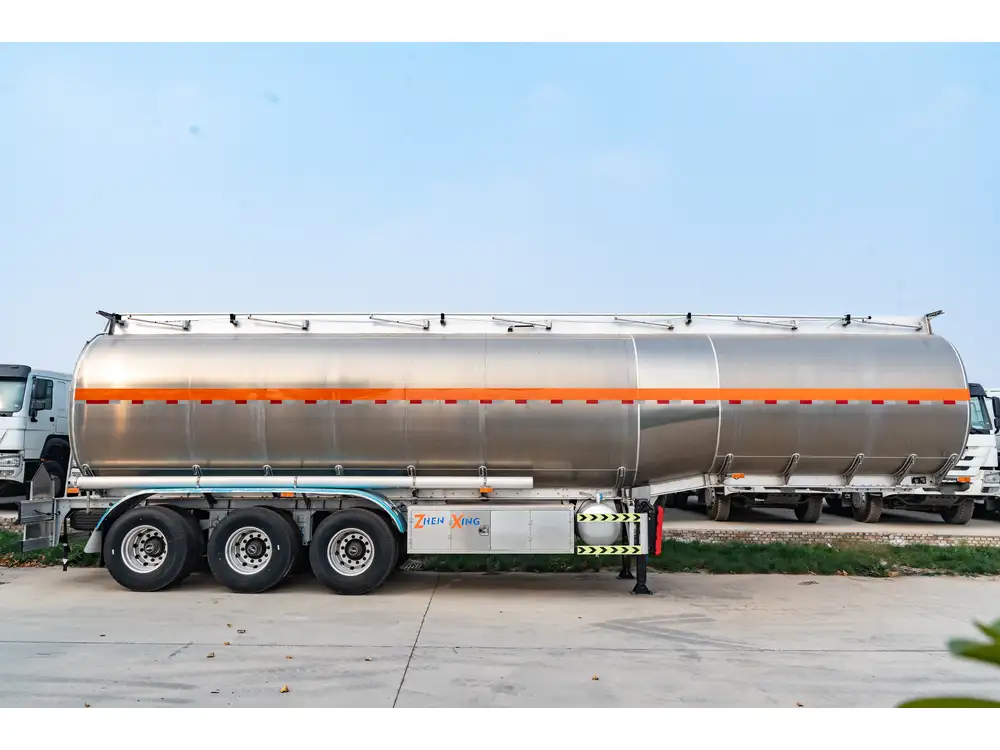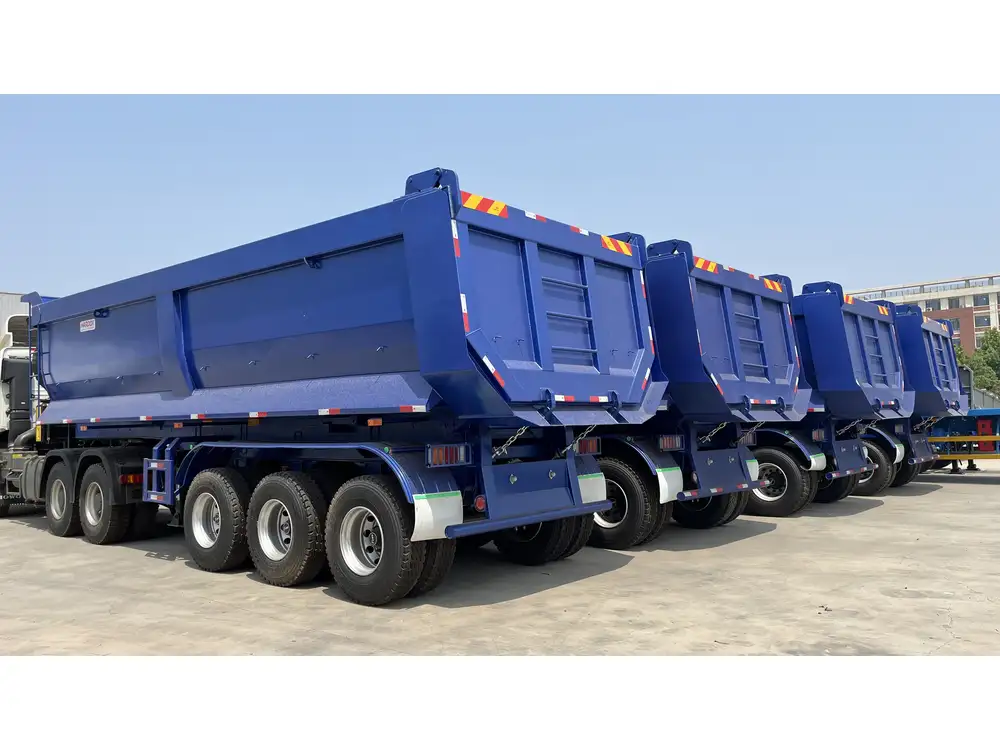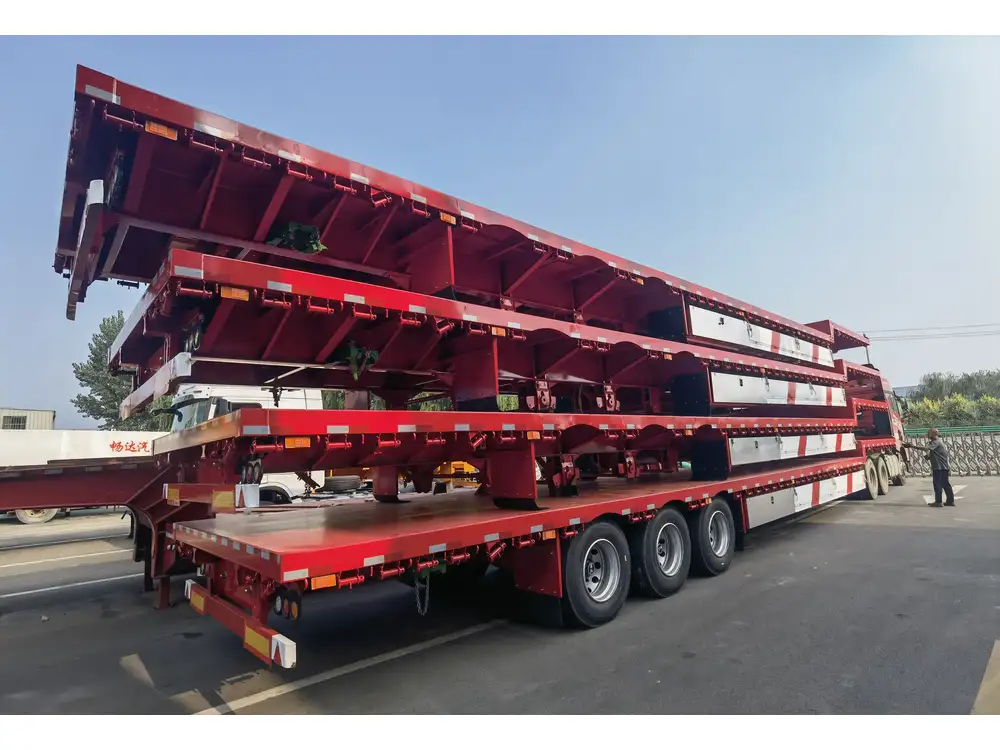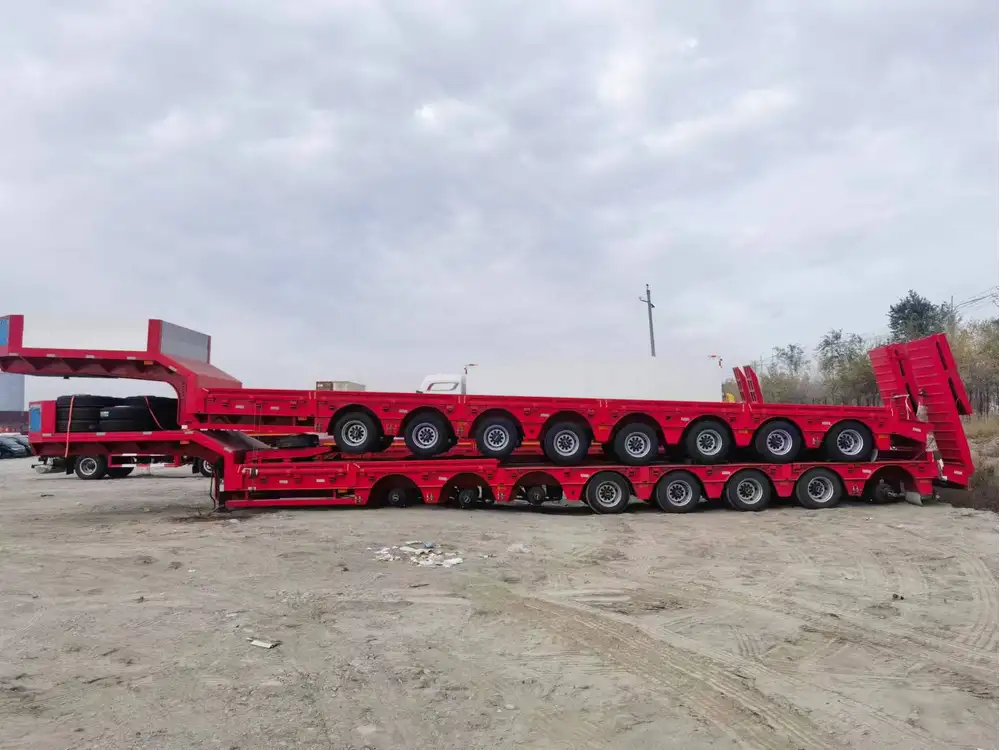When it comes to ensuring the safety and efficiency of semi-trailers, meticulous inspections are non-negotiable. Semi-trailers serve as crucial components in the transportation of goods, and their integrity is paramount. Regular and thorough checks can prevent accidents and costly repairs, enhancing operational efficacy. Understanding what to inspect on a semi-trailer can significantly improve the longevity of the asset and ensure compliance with safety regulations.
1. Structural Integrity: The Backbone of Safety
1.1 Frame Examination
The frame is the foundational structure of a semi-trailer. Regularly scrutinizing the frame for:
- Cracks and Corrosion: Look for any signs of wear and tear, rust, or damage.
- Welding Integrity: Inspect weld joints for any visible deficiencies.

1.2 Suspension System
The suspension system plays a pivotal role in load distribution and ride quality. Ensure the following elements are in top condition:
- Leaf Springs: Check for fractures or sagging.
- Air Bags: Inspect for leaks or punctures.
- Shock Absorbers: Test functionality; they should respond effectively.
1.3 Axles and Wheels
Axles and wheels are subjected to immense stress and should be inspected meticulously:
- Wheel Alignment: Misalignment can lead to uneven tire wear.
- Bearings: Ensure proper lubrication; inspect for noise during rotation.
2. Brake Systems: Crucial for Control

2.1 Brake Pads and Rotors
The braking system is vital for safe operation:
- Wear Levels: Inspect brake pads for thickness. If less than 1/4 inch, they should be replaced immediately.
- Rotor Status: Check for warping or scoring that can affect performance.
2.2 Brake Lines and Hoses
- Leak Detection: Look for signs of moisture indicating potential leaks.
- Hose Condition: Ensure hoses are not cracked or brittle.
2.3 Air Supply System
For air brake systems, testing the air supply is critical:
- Compressor Function: Verify that the air compressor is functioning properly.
- Pressure Levels: Ensure that the pressure gauge meets manufacturer specifications.

3. Tires: A Direct Contact with the Road
3.1 Tread Depth
The depth of tire treads directly correlates with traction and safety:
- Minimum Requirement: Maintain a minimum tread depth of 4/32 inches.
3.2 Tire Pressure
Check tire pressure regularly:
- Pressure Monitoring: Use a digital gauge for accurate readings.
- Sidewall Inspection: Check for bulges, cracks, or foreign objects.

3.3 Alignment and Balance
Ensure that tires are aligned properly to avoid uneven wear:
- Balancing: Periodic balancing can prolong tire life.
- Toe and Camber Angles: Misalignment can lead to handling issues.
4. Electrical System: Powering Components
4.1 Wiring and Connections
- Corrosion Checks: Inspect terminals for rust or corrosion.
- Loose Connections: Ensure all connections are tight and secure.

4.2 Lights and Indicators
Testing lights is essential for visibility and compliance:
- Trailer Lights: Verify functionality of brake lights, turn signals, and running lights.
- Reflectors: Ensure reflectors are clean and intact, enhancing visibility during low light conditions.
5. Cargo Securement Systems: Safety First
5.1 Tie-Down Devices
Cargo securement is crucial to prevent shifting during transit:
- Ratchet Straps: Inspect for frays or wear.
- D-rings and E-tracks: Ensure they are securely fastened and operational.

5.2 Load Distribution
Proper load distribution prevents tipping and improves stability:
- Center of Gravity: Ensure the load is appropriately centered.
- Weight Limits: Verify that the total weight adheres to manufacturer specifications.
6. Body Condition: Maintaining Aesthetics and Functionality
6.1 Exterior Inspection
Inspecting the exterior helps identify larger issues:
- Body Panels: Check for dents, rust, or paint peeling.
- Seals and Gaskets: Ensure they are intact to prevent moisture intrusion.

6.2 Doors and Latches
Functional doors are critical for cargo access and security:
- Hinge Operation: Check for smooth opening and closing.
- Latch Integrity: Ensure latches are secure and function properly.
7. Maintenance Records: The Road Map of Upkeep
7.1 Documented Inspections
Keep a comprehensive record of all inspections and repairs to track the semi-trailer’s maintenance history. This documentation aids in:
- Compliance: Meeting regulatory requirements.
- Resale Value: Maintains trailer value, showcasing a well-maintained vehicle.

7.2 Scheduled Service
Adopt a proactive approach toward regular maintenance schedules:
- Oil Changes: Regularly change lubrication fluids in joints and axles.
- General Servicing: Establish a regular service interval, ideally every 10,000 miles or as recommended by the manufacturer.
8. Environmental Preparedness: Weather the Elements
8.1 Undercoating and Rust Prevention
Protecting the semi-trailer from environmental damage is paramount:
- Undercoating: Apply a high-quality undercoating to resist corrosion.
- Sealing Seams: Ensure all seams and joints are sealed against water ingress.

8.2 Wash and Wax
Regular cleaning extends the lifespan of exterior components:
- Washing: Monthly washes to remove road grime and salt.
- Waxing: Semi-annual waxing to protect paint finish and enhance appearance.
Conclusion: An Investment in Safety and Longevity
Conducting thorough inspections of semi-trailers is not just recommended—it is essential. Safety, efficiency, and overall asset longevity hinge on these meticulous checks. By focusing on the critical areas outlined—structural integrity, braking systems, tires, electrical systems, cargo securement, body condition, maintenance records, and environmental preparedness—you can ensure your semi-trailer operates at optimal levels.
Ensure you stay proactive; regular inspections and maintenance are key to avoiding unforeseen complications on the road. Investing time and resources into understanding and implementing comprehensive inspection protocols will lead to enhanced safety, improved operational efficiency, and ultimately lower costs over time.
Adhering to these guidelines and regularly inspecting your semi-trailer will not only facilitate compliance with safety regulations but also enhance your reputation as a responsible operator in the transportation industry.



